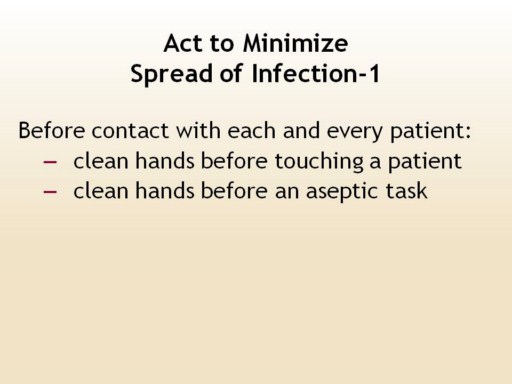| front |1 |2 |3 |4 |5 |6 |7 |8 |9 |10 |11 |12 |13 |14 |15 |16 |17 |18 |19 |20 |21 |22 |23 |24 |25 |26 |27 |28 |29 |30 |31 |32 |33 |34 |35 |36 |37 |38 |39 |review |
 |
Before contact with each and every patient a student should clean their hands before touching a patient. This is important to protect the patient against harmful micro-organisms carried on the hands. Students may have been travelling on a bus immediately before entering the hospital and the ward where they intend to take a history from a patient. In doing so they may shake the hand of the patient or comfort the patient as a humane gesture. They may also be requested to assist a patient to move from the bed to a chair, or to a sitting area for more privacy. They might be required to perform a physical examination, take the pulse of the patient or blood pressure and abdominal palpation.
A student should clean hands before an aseptic task. It is essential that students clean their hands immediately before any aseptic task. This is necessary to protect the patient against harmful micro-organisms, including the patientís own micro-organisms, entering his or her body. Students must protect against transmission through contact with mucous membrane: oral/dental care, giving eye drops, secretion aspiration. Often students will be treating patients who have open wounds and any contact with non-intact skin: skin lesion care, wound dressing, any type of injection is an opportunity for transmission. Medical devices are well known for harbouring potentially harmful micro-organisms and contact with devices such as catheter insertion, opening a vascular access system or a draining system must be done with careful preparation. Students should also be diligent in preparation of food, medications and dressing sets. |